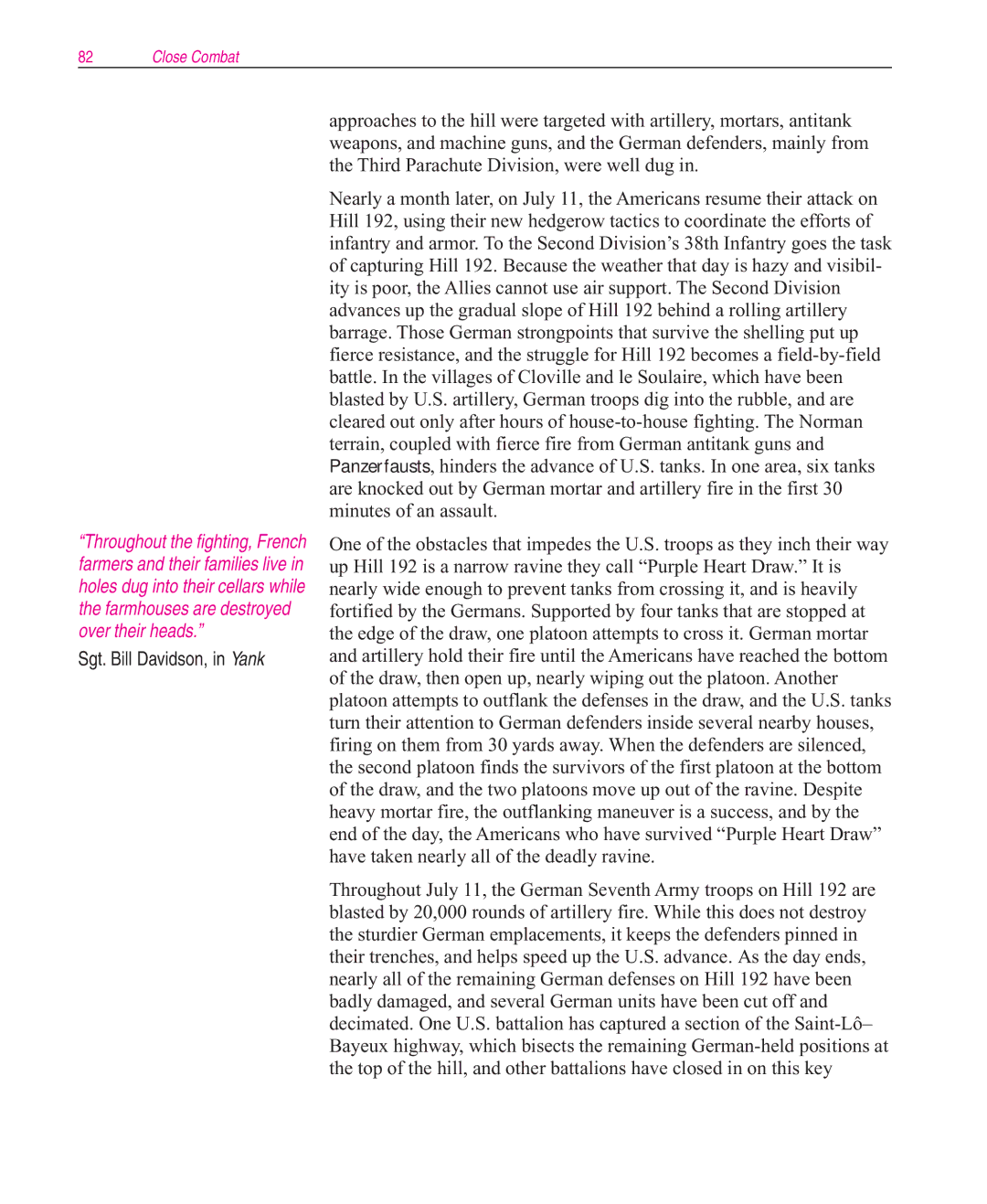82Close Combat
“Throughout the fighting, French farmers and their families live in holes dug into their cellars while the farmhouses are destroyed over their heads.”
Sgt. Bill Davidson, in Yank
approaches to the hill were targeted with artillery, mortars, antitank weapons, and machine guns, and the German defenders, mainly from the Third Parachute Division, were well dug in.
Nearly a month later, on July 11, the Americans resume their attack on Hill 192, using their new hedgerow tactics to coordinate the efforts of infantry and armor. To the Second Division’s 38th Infantry goes the task of capturing Hill 192. Because the weather that day is hazy and visibil- ity is poor, the Allies cannot use air support. The Second Division advances up the gradual slope of Hill 192 behind a rolling artillery barrage. Those German strongpoints that survive the shelling put up fierce resistance, and the struggle for Hill 192 becomes a
One of the obstacles that impedes the U.S. troops as they inch their way up Hill 192 is a narrow ravine they call “Purple Heart Draw.” It is nearly wide enough to prevent tanks from crossing it, and is heavily fortified by the Germans. Supported by four tanks that are stopped at the edge of the draw, one platoon attempts to cross it. German mortar and artillery hold their fire until the Americans have reached the bottom of the draw, then open up, nearly wiping out the platoon. Another platoon attempts to outflank the defenses in the draw, and the U.S. tanks turn their attention to German defenders inside several nearby houses, firing on them from 30 yards away. When the defenders are silenced, the second platoon finds the survivors of the first platoon at the bottom of the draw, and the two platoons move up out of the ravine. Despite heavy mortar fire, the outflanking maneuver is a success, and by the end of the day, the Americans who have survived “Purple Heart Draw” have taken nearly all of the deadly ravine.
Throughout July 11, the German Seventh Army troops on Hill 192 are blasted by 20,000 rounds of artillery fire. While this does not destroy the sturdier German emplacements, it keeps the defenders pinned in their trenches, and helps speed up the U.S. advance. As the day ends, nearly all of the remaining German defenses on Hill 192 have been badly damaged, and several German units have been cut off and decimated. One U.S. battalion has captured a section of the
